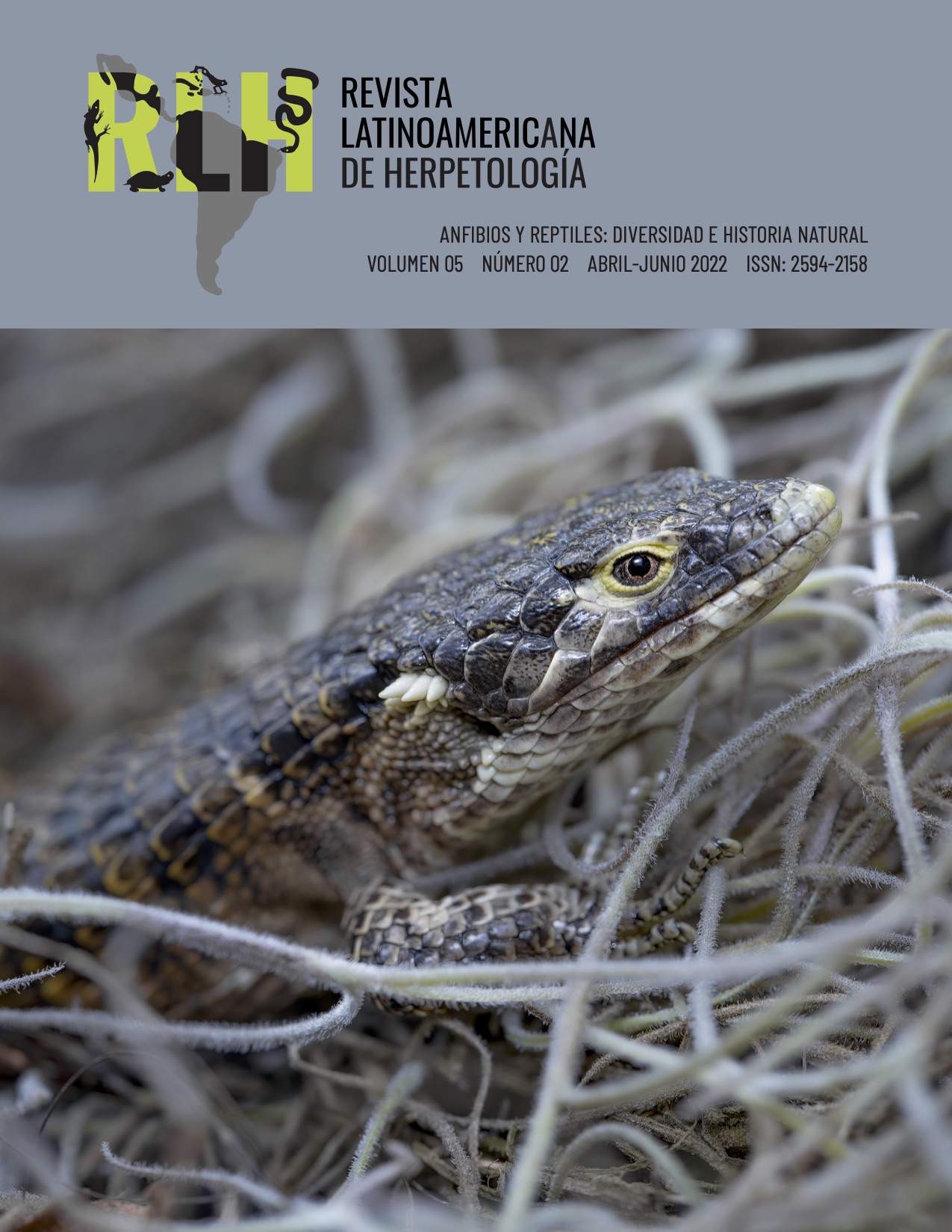POSTNATAL OSSIFICATION PATTERN AND HETEROCHRONIES IN ANDEAN GYMNOPHTHALMOIDEA LIZARDS
DOI:
https://doi.org/10.22201/fc.25942158e.2022.2.422Keywords:
Alopoglossidae, Gymnophthalmidae, ontogeny, postembryonic developmentAbstract
Gymnophthalmoidea is a clade composed of the families Alopoglossidae, Teiidae and Gymnophthalmidae. Their geographical distribution, from lowlands to highlands in the Andes, with small and very large species, and species with body elongation and limb reduction, makes this group a model to explore the development of skeleton. The pattern of ossification during postembryonic development is a source of phylogenetic information. For this reason, we described the ossification pattern of some species of Gymnophthalmidae (Anadia bogotensis, Riama striata) and Alopoglossidae (Alopoglossus bicolor) and compared it with other species in Gymnophthalmoidea. In addition, we analyzed whether the events of the ossification pattern constitute heterochronies of phylogenetic value between Alopoglossidae, Teiidae and Gymnophthalmidae. We found that Gymnophthalmoidea shares characteristics of the ossification pattern with Squamata in the skull and limbs. A heterochronic event was reported for Gymnophthalmidae, in which the development of secondary centers of ossification in radial epiphyseal cartilages occurs later than ossifications in the humeral, ulnar, metacarpal and femoral epiphyseal cartilages, and carpus. In conclusion, A. bogotensis, R. striata and B. bicolor share characteristics different from A. bicolor, indicating phylogenetic differences, which was evident for a heterochronic event reported in this study for Gymnophthalmoidea. Therefore, skeleton studies provide relevant phylogenetic information to understand the evolution of Squamata.
Downloads
Published
How to Cite
Issue
Section
License
Copyright (c) 2022 Revista Latinoamericana de Herpetología

This work is licensed under a Creative Commons Attribution-NonCommercial-ShareAlike 4.0 International License.







